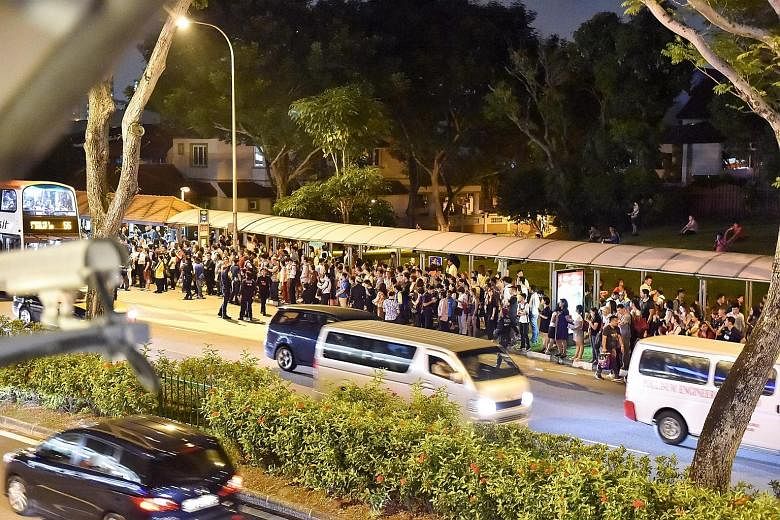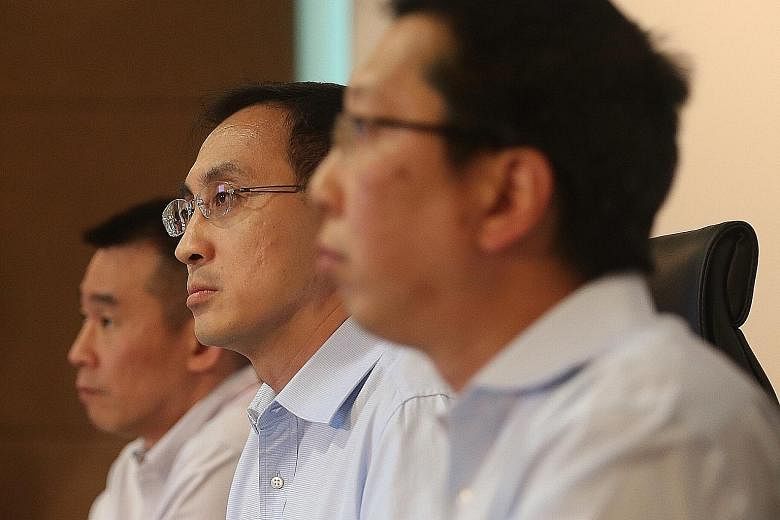Salt, water and electricity do not mix. That simple truth was driven home hard on July 7 when an accumulation of salty deposits on an electrical component on the East-West Line triggered the biggest rail breakdown here.
In releasing its findings three weeks after the incident yesterday, the Land Transport Authority (LTA) and rail operator SMRT Corp said lab tests found the deposits were caused by a persistent leak near the Tanjong Pagar station tunnel towards Raffles Place.
The deposits were 15 times saltier than seawater.
Water from the leak itself was found to be one-sixth the saltiness of seawater - an indication that the deposits had taken some time to precipitate.
The deposits allowed electricity from the MRT's power-supplying third rail to stray across its insulator into the ground. This caused several electrical trips along the East-West Line as well as the connected North-South Line.
Tripping cuts off electricity supply to prevent stray current from electrocuting train occupants.
The findings were arrived at with the help of external experts Parsons Brinckerhoff and Meidensha Corp, whose services are paid for by the LTA. They coincide with a hypothesis put forth by Dr George Yu, a chartered engineer specialising in industrial forensics, failure analysis and accident investigation.
Dr Yu, who has done extensive work on the MRT, told The Straits Times just days after the July 7 breakdown that deposits on insulators were the prime suspect.
He said contaminants would settle on the third rail insulators over time. These include water and graphite dust from the trains' current collector shoes, which make contact with the third rail. Graphite is a conductor of electricity.
To prevent a repeat of the incident, Dr Yu said SMRT should "prevent insulators from contacting water or liquid". He also suggested that insulators be regularly cleaned to prevent deposit build-up and that old insulators with heavy deposits in areas which are exposed to tunnel water leakage be immediately replaced.
SMRT said that this was done right after the incident. The operator and the LTA added that they will replace some 30,000 insulators on both lines by the first quarter of 2017 - along with the planned third rail replacement programme.
SMRT also said it would improve maintenance of the insulators. Its chief executive Desmond Kuek said: "We've reviewed all our existing work instructions and we're satisfied that they've all been complied with. But... we will be taking firm steps to review and improve all those work instructions."
SMRT will also "desensitise" the circuit breakers that trip the system, by raising the stray voltage limit from 136 volts to 200 volts by the end of this week. The LTA said this was in accordance with international standards and completely safe.
In the longer term, it will implement voltage limiting devices which are being tested in Downtown Line 1. These will isolate power trips.
The LTA added that it was also studying the feasibility of separating the North-South and East-West lines - so that a power incident does not propagate itself across both lines.
It said this would be considered carefully, so as to ensure that doing so would not give rise to other weaknesses.
LTA chief executive Chew Men Leong added that "we will leave no stone unturned" to improve the reliability of system.



